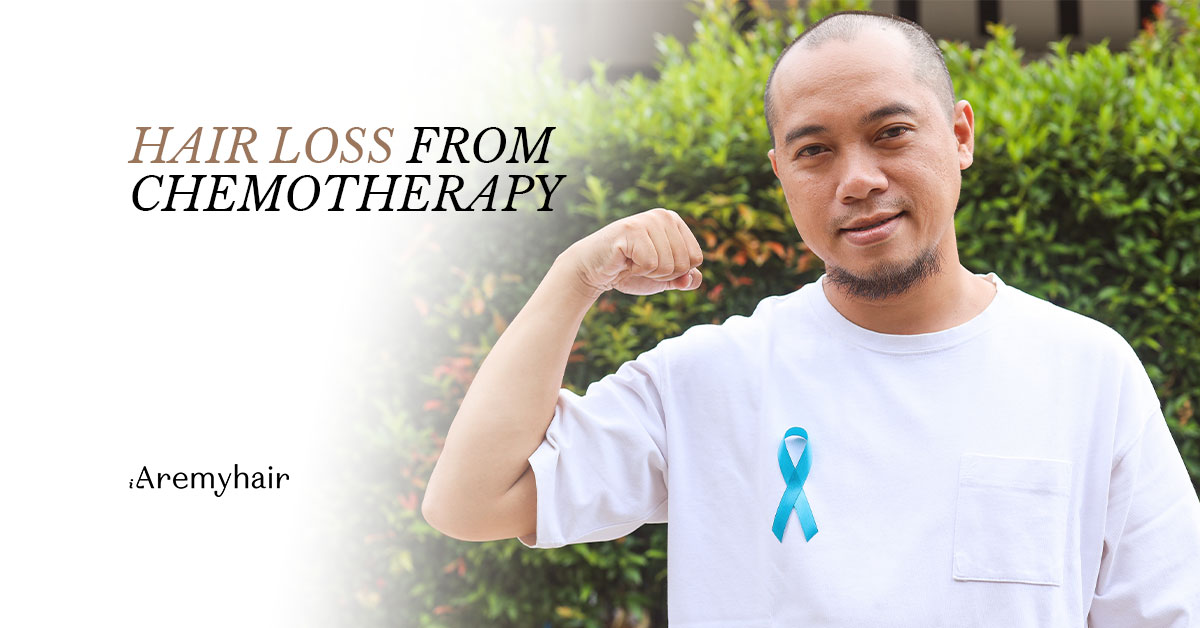While chemotherapy is celebrated for its results in targeting cancer cells, it also induces side effects that can remarkably affect a person’s overall wellbeing. One of the most well-known side effects is hair loss from chemotherapy, which profoundly impacts an individual not just physically but also emotionally.
Medical wigs provide essential support for cancer patients facing hair loss from treatments, helping them regain a sense of normalcy and confidence during the treatment phase. With this blog, we hope to help patients and their families understand what to expect and the options that are available to them when dealing with hair loss from chemotherapy.
VALUE-ADDED SERVICES: WHY OUR CLIENTS KEEP COMING BACK!
Common Questions About Chemotherapy & Hair Loss
First things first, why does chemotherapy cause hair loss? Chemotherapy targets fast-growing cells in the body, including hair follicles. This damage to the follicles causes hair to stop growing and eventually fall out. But chemo doesn’t just make the scalp hair fall out. It can also affect hairs all over the patient’s body, including eyelashes, eyebrows, and other areas.
Certain chemotherapy medications have a higher chance of causing hair loss than others, and the extent of hair loss may differ depending on the dosage of the drug. So, while some people might only notice a bit of thinning, others might experience complete hair loss.
When does the hair loss from chemotherapy start? The timing of hair loss during chemotherapy can vary from person to person. For some, hair loss may begin within a few weeks of starting treatment, while for others, it may take a couple of cycles of chemotherapy before hair loss becomes noticeable.
Can hair loss from chemotherapy be prevented? Unfortunately, no effective chemotherapy treatment prevents the patient’s hair from falling out. Researchers have looked into various therapies that might help stop hair loss, but none have proven effective.
Does the hair come back after chemotherapy? Typically, hair returns within weeks to months after the drug treatment ends. However, it may take several months to return to the hair’s pre-treatment thickness and texture.
In some cases, hair may grow back differently in colour or texture. It could become curlier, or appear grey until the cells responsible for hair pigment regain function. Patience is important as the body needs time to recover and regrow hair naturally.
BEFORE & AFTER: SEE OUR CLIENTS INCREDIBLE TRANSFORMATIONS
Nurturing Regrowth & Recovery Throughout the Treatment
Start by using mild, sulfate-free shampoos and conditioners for cleansing without causing irritation. Gently massaging the scalp during washing can stimulate blood circulation. Keep the scalp hydrated to prevent dryness and itchiness, using moisturisers or oils formulated for sensitivity.
A nutritious diet plays a crucial role in hair health—fruits, vegetables, lean proteins, and healthy fats. Scalp massages using soft, circular motions can also help stimulate hair follicles. Protecting the scalp from the sun’s harmful UV rays is essential, especially for sensitive skin and new hair, so wearing hats, scarves, or applying sunscreen is advisable.
For those looking for additional confidence during regrowth, medical wigs or hairpieces can provide comfort and make patients a little less self-conscious. Medical wigs should be lightweight, breathable, and comfortable for everyday wear.
Quick Guide to Choosing Medical Wigs
It’s not advisable to use standard fashion wigs, which can be rough and ill-fitting. Medical-grade wigs are recommended for the sensitive, tender scalps of patients who have undergone chemotherapy. Medical wigs are designed with comfort in mind. They come with a soft lining to reduce itchiness and discomfort, ensuring a snug, gentle fit for the wearer’s delicate head.
First up, decide between human hair and synthetic wigs. Human hair wigs look and feel real and let you style them as you please, but they’re pricier and need more care. Synthetic wigs, on the other hand, are easier to look after, more affordable, and still offer a realistic appearance.
The wig’s cap matters too, for a natural look and comfort. Look for features like lace fronts for a real hairline and breathable materials, especially if you have a sensitive scalp. Make sure your wig fits well to avoid it being too tight or loose, which can be uncomfortable or easily detached.
Lastly, the style and colour are all up to you. You might want to match your natural hair to keep things consistent or try something new for a change. The key is feeling confident and comfortable with your choice.
READ MEDICAL WIGS x HAIR REPLACEMENT SYSTEM
Looking for Medical Wigs in Singapore?
Choosing a medical wig is about comfort, looking natural, and fitting your lifestyle. But beyond cosmetic purposes, your wig serves one important purpose: to help you feel your best when you need it most.
If you’re looking for a respected hair replacement studio in Singapore that offers high-quality medical wigs, we at Aremyhair have an extensive range of natural-looking and comfortable medical wigs sold over the counter.
Aremyhair stands out with its natural-looking medical wigs made from human hair. Our medical wigs are designed with comfort in mind, featuring lace fronts and monofilament caps for a lightweight, breathable fit.
We offer personalised fitting to ensure our wigs meet your needs perfectly. Our team brings years of expertise in sourcing wigs that cater to various preferences, all with a commitment to transparency, integrity, and fair pricing.
At Aremyhair, we’re more than just specialists; we’re your supportive friends, ready to provide free consultations to help you choose the best wig for you. Our goal is to make sure you feel confident and comfortable, with affordable options that don’t compromise on quality.

